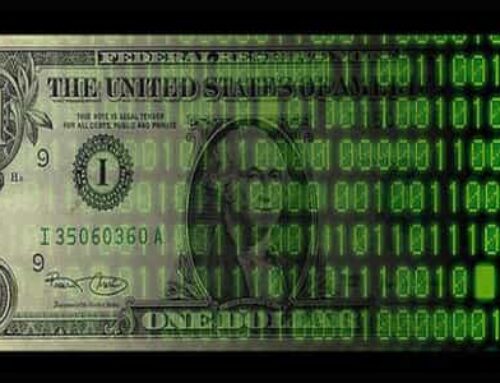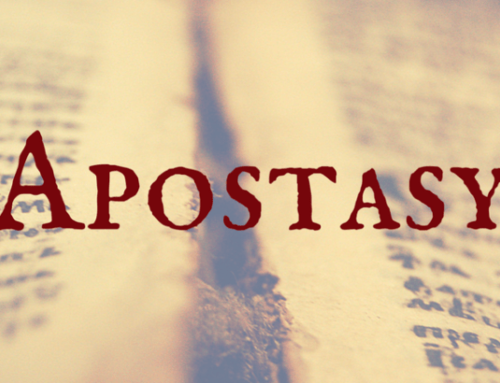
Did Pilate Proclaim Jesus to be God?
By Shari Abbott
Reprinted from: Reasons for Hope* Jesus
There was a message nailed to the cross of Jesus. It’s not easily seen, but it’s there. What did Pilate write? He wrote more than what you know. Did Pilate intentionally write the message and have it nailed to the cross?
Of course we know what’s really important. Nailed to the cross of Jesus Christ was every sin we have committed, or ever will commit. Jesus took upon Himself our sins and paid for them with His blood, opening the way of salvation for all who come to Him in faith. But there is also another message, nailed to that cross. It was written on a piece of wood, placed above the head of the Lamb of God, and it proclaimed Jesus not only to be The King of the Jews but also to be the Great I Am.
A Hidden Message Written in Wood
This message is a remez A remez, in Jewish hermeneutics (study of Scripture), is the hint of a hidden message or a deeper meaning. It’s something “below the surface” or “behind the words” that reveals another message or a deeper understanding. We find a remez in the piece of wood that Pilate commanded to be nailed to the cross of Jesus. It’s really amazing what Pilate commanded to be written on it.
The Scripture tells us that Pilate asked Jesus the question, “Art thou the King of the Jews?” We are also told that Jesus confirmed Pilate’s words with, “Thou sayest it.” (Luke 23:3) Next we are told that Pilate offered to release one of the prisoners to the people and he used the title “The King of the Jews” in referring to Jesus:
John 18:39 “But you have a custom that I should release someone to you at the Passover. Do you therefore want me to release to you the King of the Jews?”
The Jews did not accept this offer, but instead cried out, “Crucify Him” (Luke 23:21). So Pilate sentenced Jesus to be crucified.
The Titlon
 It was customary for the Romans to put a sign on each cross. This sign labeled the person being crucified with the crime for which they had been charged. The sign was called a titlon and it was an official announcement from the presiding government official. Pilate wrote the inscription and had it nailed to the top of the cross of Jesus.
It was customary for the Romans to put a sign on each cross. This sign labeled the person being crucified with the crime for which they had been charged. The sign was called a titlon and it was an official announcement from the presiding government official. Pilate wrote the inscription and had it nailed to the top of the cross of Jesus.
John 19:19 Pilate wrote a title, and put it on the cross. And the writing was, JESUS OF NAZARETH THE KING OF THE JEWS.
This greatly angered the chief priests of the Jews, who demanded of Pilate….
John 19:21 …“Do not write, ‘The King of the Jews,’ but, ‘He said, “I am the King of the Jews.”‘
Pilate responded with,
John 19:22 “What I have written I have written.”
In the Greek, Pilate answered the chief priest using the perfect tense, which is understood to mean, “What I have written will always remain written.” And so it has remained written–not only on the cross that day but throughout the pages of history from that time forth.
What Made The Chief Priests So Angry?
Here’s where we find the remez, or hidden message. Yes, we know that the chief priests did not want to acknowledge Jesus of Nazareth as the King of the Jews, but there may have been something much deeper that alarmed and stirred them to even greater concern.
The following information is something I learned from the Bible study teachings of Chuck Missler (khouse.org). I present it for your consideration and I encourage you to search the Scripture to see if this be so (Chuck Missler would also tell you to do the same). It’s very interesting and has merit. There’s definitely a message, but whether Pilate intended it to be so we do not know. We also do not know if this roused the anger of the chief priests, but there is reason to believe they would have seen the message on the titlon and understood what it proclaimed.
An Epitaph Above Jesus’ Head
Pilate may not have understood what he was doing when he gave instructions for the words to be inscribed on the titlon placed above Jesus’ head. He required that the words, Jesus of Nazareth King of the Jews, be written in all three languages of the day. Hebrew was the native language of the people of Jerusalem, the land in which Jesus was being crucified. Greek was the common language used during that time. And Latin was the official language of the governing power of the day, Rome.
John 19:19-20 Now Pilate wrote a title and put it on the cross. And the writing was: JESUS OF NAZARETH, THE KING OF THE JEWS. Then many of the Jews read this title, for the place where Jesus was crucified was near the city; and it was written in Hebrew, Greek, and Latin.
The remez is found in understanding the inscription written in Hebrew. Remember that the Hebrew language is written from right to left, so it would have read:
The Jews The King The Nazarene Jesus
HaYehudim v Melech HaNazarei Yeshua
The message is found in the acrostic that is formed by these words. An acrostic is a form of writing in which the first letters of each word, line or paragraph are strung together to spell a word or message (we call this an acronym).
Acrostics are found throughout Hebrew writings, including in the books of Lamentations, Esther, Leviticus, Proverbs 31, and numerous psalms—most notably the longest psalm, Psalm 119, which is divided into subsections with each section beginning with a letter of the Hebrew alphabet.
The acrostic formed by the first letters of each word in the inscription on the titlon (reading right to left) is YHVH. Therefore, above Jesus’ head, written in an acrostic, was revealed “YHVH,” which is Yahweh or Jehovah. This is the covenant name of God, given to His people. It is also known as the tetragrammaton, the unpronounceable name of God, and the Great I Am.

(image: khouse.org)
Who knew?
Did Pilate know what he was writing? We have no way of knowing for certain, but had Pilate written these words in any other sequence or with additional or fewer words, it would not have revealed the same message.
Did the Jews know what Pilate had written? We do have good reasoning to suspect so, because Jews of that time understood and recognized acrostics from their common use in so many of their writings.
Did the chief priests and Pharisees know that Jesus was God? Again, we don’t know for certain, but there is reasoning to think they did. We know that they felt threatened by Jesus and they took seriously the threat that Jesus’ committed followers would pose to their system of religion. This is clear when the chief priests and Pharisees requested that the tomb be secured and gave reason that Jesus had said He would rise again from the dead (Matthew 27:62-64). They expressed concern that His body might be stolen by His followers.
Pilate agreed to their request to secure the tomb, and he did so by “sealing the stone and setting a watch” (Matthew 27:65-66). In doing so, Pilate provided further evidence of the resurrection power of Jesus Christ. No human man could have moved that stone, nor escaped past those guards.
Jesus, The Nazarene, The King of The Jews = Yahweh
It’s fun to find a remez. It’s the revealing of a deeper mystery that gives us one more reason to rejoice in the Lord and all that He has revealed in His Word. It is a reminder of the divine nature of inspiration on every page of the Bible and that, in His Word, God has revealed to us all that we need to trust in Him in all things.
God continues to reveal more and more about Himself through His Word. Be a good student of the Word and test all teachings against Scripture. Dig deeply and learn more about the One who is our All-in-All. He is the King of the Jews and the King of our hearts.
…Behold, the kingdom of God is within you.
For the kingdom of God is…
righteousness, and peace, and joy in the Holy Ghost.
(Luke 17:21, Romans 14:17)
<*}}}><







Leave a Reply, please --- thank you.